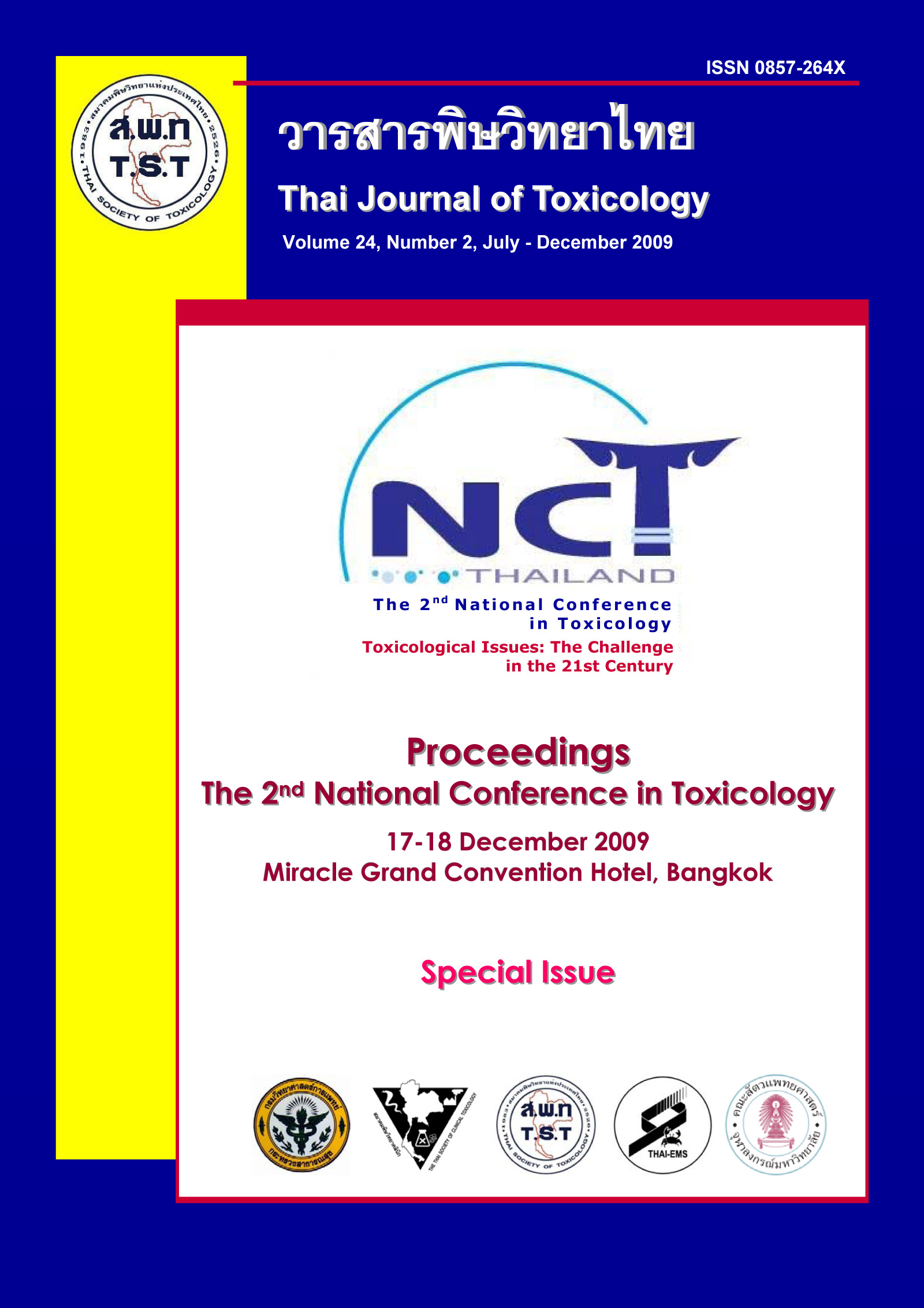Detection of Urinary Kidney Injury Molecule-1 in a Chronic Cadmium Exposed Population, Mae Sot District, Tak Province
Main Article Content
Abstract
Cadmium (Cd) has been found as an environmental pollutant in Mae Sot district, Tak province. Contaminated Cd in water and rice causes high risk of renal dysfunction among the inhabitants. In order to investigate the effect of Cd induced renal dysfunction, a kidney injury molecule-1 (KIM-1), a recently discovered biomarker for an early detection of renal tubular dysfunction, was measured using an enzyme linked immunosorbent assay (ELISA). Polyclonal goat anti-KIM-1, horseradish peroxidase labeled streptavidin and its specific substrate were used in the in-house ELISA technique. The method was validated and used to quantitate KIM-1 in the urine of 700 Mae Sot inhabitants in comparison to two conventional renal biomarkers; N-acetyl-β-D-glucosaminidase (NAG) and β2-microglobulin (β2 -MG). The results showed that KIM-1 standard concentrations provided good linearity (r=0.998) with limit of detection and quantitation at the concentrations of 33.20 pg/ml and 110.68 pg/ml, respectively. The coefficient variation (CV) for inter-day and intra-day precisions for 3 levels of KIM-1 (200, 800 and 3,000 pg/ml) were at 0.8, 1.2, and 2.1% CV and 0.7, 2.4, and 6.7% CV, respectively. The accuracy of the assay was found with 89-101% recovery. The average ± SD of the KIM-1 concentrations in urine samples of 700 Mae Sot inhabitants were at 1,347±1,290 pg/gCr, ranged between 61-15,330 pg/gCr. Using Spearman’s rho analysis, a strong positive correlation between KIM-1 and Cd concentrations (r=0.234, P<0.001) was found. The Cd was also correlated well with the NAG (r=0.263, P<0.001) and β2-MG (r=0.179, P<0.001). Prevalence of high excretion of renal biomarkers was shown in dose response relationship to Cd concentrations. This finding demonstrated that KIM-1 was a sensitive biomarker for detection of renal dysfunction in population with high Cd exposure.


